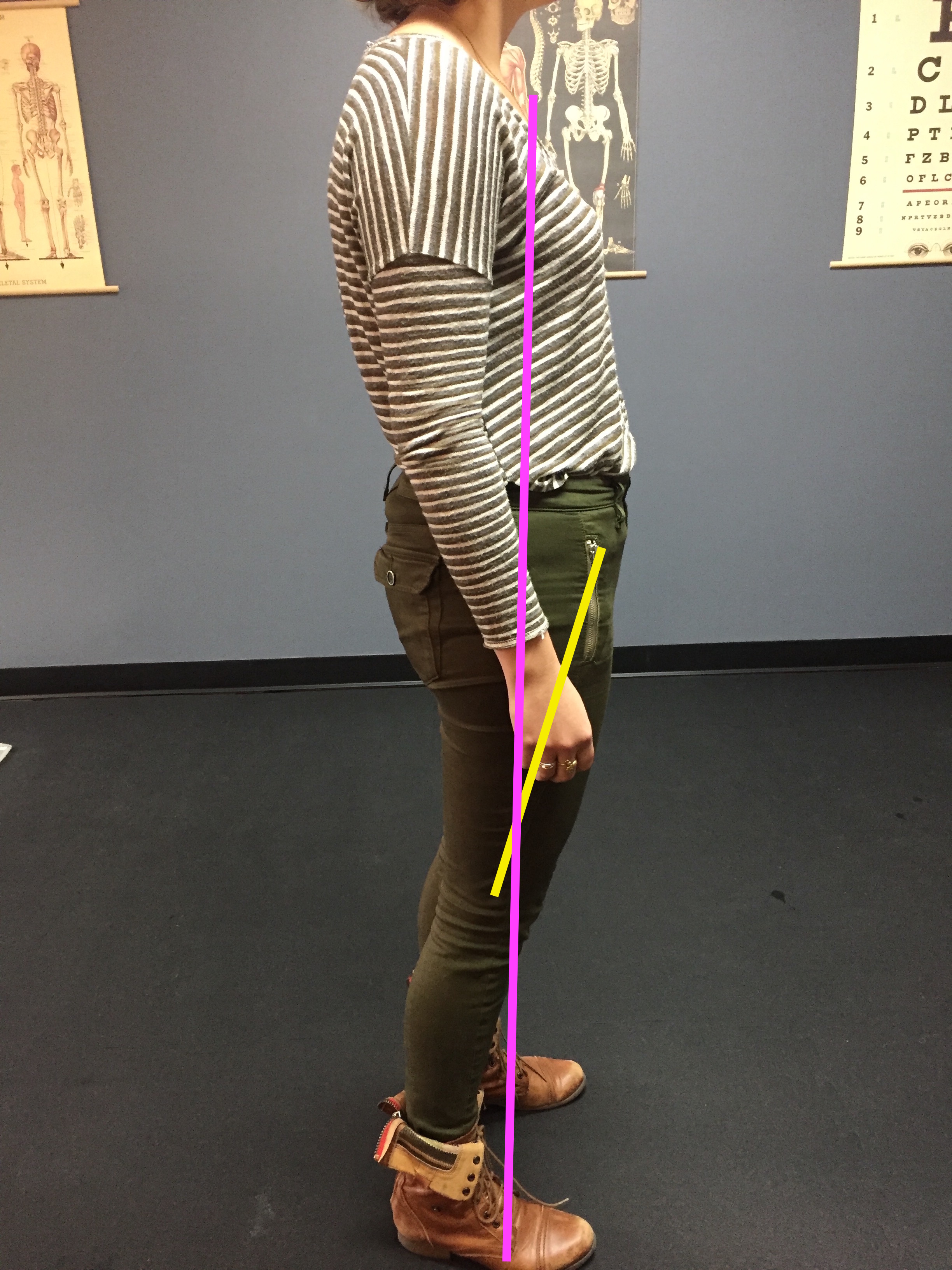This post may blow your mind.
What I have to say here is my opinion only regarding hip flexor stretching. I have three clinical specialities as a Physical Therapist: dance, CrossFit, and hip impingement and I feel very strongly about how to approach the hip joint. I am passionate about decreasing the trend for people to merely stretch their painful areas, rather than exploring WHY they have pain. That said, some folks (namely those who don't have hip pain), may do just fine with hip flexor stretching if they find it useful or enjoyable.
I have decided to write about this because it is so prevalent in my practice and I think the biggest problem is a misunderstanding of anatomy and the idea that if something is sore, stretching will help it. So, if you struggle with hip tightness or pain and are spending a lot of your time stretching the hip, please read on:
Common Hip Positions:
More often than not, the hip joint is held in extension.
Extension is the position where the femur (leg bone) is posterior to (behind) the body. When the femur is posterior and the hip is in extension, we see that the femoral head is anterior (forward) relative to the midline of the body. The image of the skeleton represents the femur in a neutral position, neither flexed nor extended.
The image below demonstrates a typical standing position that I see in the clinic where the hip is extended and the femoral head is pressing forward. The pink line is the same plumb line we see for the skeleton. The yellow line is the placement of the femur from its head (ball) to the knee. We see it is positioned FORWARD (ie. in hip extension).
In the image of hip extension (above), you will note that the feet and knees are positioned behind the hips. The knees are locked and the pelvis is thrust forward. Again, the femoral head is sitting forward on the anterior hip capsule and other anterior structures of the hip (namely, the iliopsoas muscle … yes, the same one that everyone wants to massage and stretch).
A similar anterior positioning of the femoral head can happen in sitting. Though the hip may be flexed (with the femur in front of the body), people most often sit with the majority of their weight in the back of the pelvis, placing the pelvis in a posterior tilt (tucked under; note red curved line).
Notice that the femoral head is sitting forward relative to the knee (yellow line; the line is exaggerated a bit for visual purposes). This could be considered relative hip extension. In essence, people tend to both stand and sit with their hips in a position which encourages an anterior femoral glide consistent with hip extension. A person with weakness in the hip muscles, excessive mobility in the passive (non-contractile) structures of the hip (namely the joint capsule and ligaments), or the anatomical bony structure to allow this, may have an increased propensity for an anterior positioning of the hip joint in sitting and standing. In this sense, they are already placing undue stress on the front of the hip, including the hip flexor muscles.
Why athletes (& often their trainers, coaches & healthcare providers) feel they need to stretch their hip flexors and why it may not help:
People often feel pressure and tightness in their anterior hip when the femur has been positioned anteriorly. The tendency then is to want to stretch the hip, specifically the hip flexors. However, if the hip is chronically in extension as described above, stretching the hip flexors can really exacerbate the situation. The misconception is that tightness is due to a muscle being tight and strong. Often, the hip flexors, especially the psoas, are in fact, long, underused, weak, and dysfunctional. Alternatively, some of the hip extensors: the hamstrings and the adductors, are short, stiff, and underworked. And, typically, other hip extensors – the glute max, posterior gluteus medius and the deep hip external rotators are not functioning well. Because they attach to the head of the femur and pull it backward, you can see how if these muscles aren’t working well, the head of the femur can glide too far forward. So we have the following:
a tendency to stand or sit with the hip in relative extension
a feeling of “tightness” in the front of the hip
a long, underused, weak, and dysfunctional psoas muscle
short, stiff, and underworked muscles on the backside of the hip
weakness in the muscles which attach to head of the femur and anchor it in place, preventing it from shifting forward
How this impacts hip impingement conditions:
Too often I am the PT who intercepts a patient who has been unsuccessful in physical therapy for hip pain. Unfortunately, the first thing I have to undo is the concept that stretching something painful will be the solution. Remember that tightness isn’t always shortness. Tightness can be shortness but it can also be your body neurologically reacting to stress and the muscle may very well be in spasm. It may also be your muscle trying to work because it is actually weak. By stretching it, not only are you encouraging the problem position of extension, but you might be really irritating an already cranky muscle.
* * *
Hip impingement is commonly seen in dancers
Hip impingement in dancers makes sense as this anterior hip position is common and encouraged for this activity:
Often dancers are genetically gifted with this flexibility. But, they also try to stretch their hips to allow this position to progress even further as seen on the right.
Unfortunately, over time, these positions can cause a lot of dysfunction and pain in the hips. Because we understand that these positions are necessary for the dance community, we don't want to discourage them until they ARE a problem. However, as practitioners, we need to be aware that if someone comes into the office with "hip flexor tightness", perhaps stretching the painful structures will cause more harm than good. Many times, these dancers need some hip stabilization and strengthening to balance out the joint.
We also see hip impingement in CrossFit and weightlifting athletes who perform a lot of squatting:
So many of my CrossFitting patients complain about stiffness in their hips and an inability to squat below parallel without pinching in the front of the hip. So, they resort to stretching the front of the hip. But, after the earlier discussion of anatomy and observing that the hip is often already in the position of extension, it has to be considered that improving extension might not be the solution. Additionally, if you are trying to FLEX the hip (ie. get the knee in front of the hip), stretching it into extension will not likely be the correct choice. I usually find that the squat limitations are related to any combination of the following:
ankle mobility
core stability deficits
lack of practice
tightness in the hamstrings or adductors
improper shoes
too much weight and not enough strength
an inability for the femur to center back into the acetabulum (socket) as the pelvis lowers
anatomical barriers such as the bony architecture of the hip not allowing the full position (and sadly, no amount of stretching will change this...)
Better choices:
So, I propose some better choices for improving the mobility of the hip flexor without stretching the muscle:
put simply, stop stretching that muscle: very few people need to be doing pigeon pose or the couch stretch
stretch your quad without involving the hip flexor in the stretch
stretch the glutes as in a figure 4 stretch
try using mobility tools to increase mobility but not stretch or lengthen the tissues
strengthen your glutes and hamstrings
sit with neutral posture so that the femur is better centered in the socket
improve your ability to center the femoral head and correctly strengthen the hip muscles
see a good physical therapist who understands hip impingement and your sport and can help you with the above tasks.
Finally, if tweaking your form is necessary for you to make a pain-free return to your sport, please contact Arrow Physical Therapy to make your appointment today!









